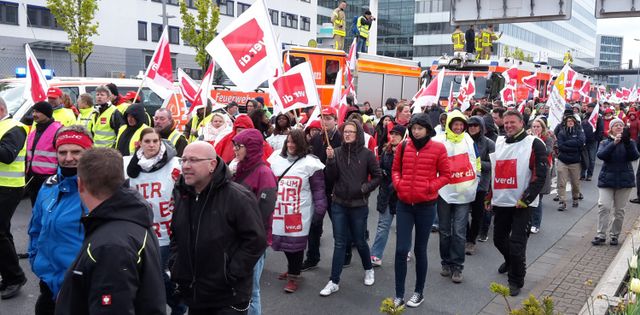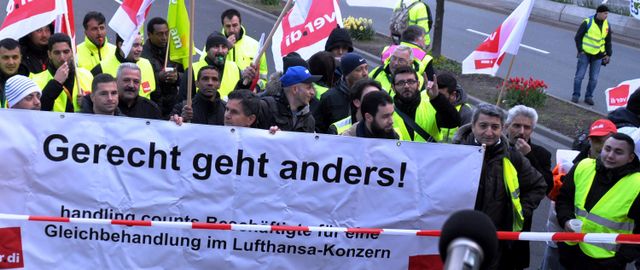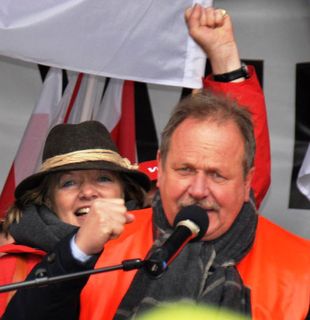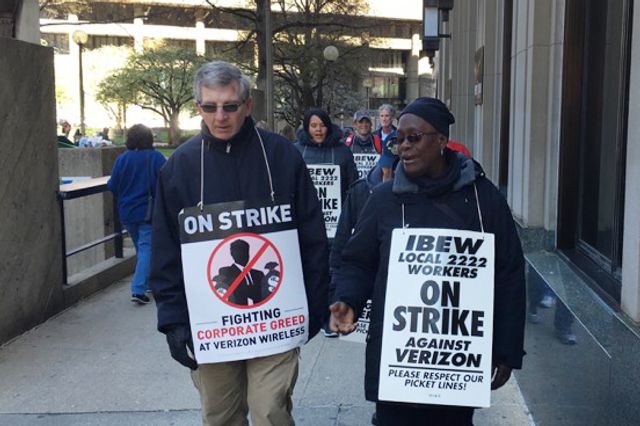Alex Lantier
The European Union (EU) and the Washington, DC-based International Monetary Fund (IMF) are set to demand fresh austerity measures on top of those agreed by Greece’s Syriza government last year, as part of the country’s €86 billion bailout plan agreed last summer.
Syriza (the “Coalition of the Radical Left”) agreed last July to impose massive austerity measures, trampling on both its election pledges to end EU austerity and a landslide “no” vote in a referendum it had called on EU austerity. In yet another act of political treachery, Syriza is preparing billions of euros more in austerity measures against the Greek population in talks with the IMF and the EU.
With €60 billion of the €86 billion aid package still remaining to be disbursed, the IMF and EU are insisting on €3 billion in permanent cuts to yearly spending. If Greece fails to make these so-called “contingency” cuts, they will withhold the remaining funds, forcing Greece to default on €3.5 billion in debt payments coming due this summer—echoing the EU threat to force Greece to default last summer.
US officials supported EU calls for Greece to implement new austerity measures as a precondition for writing off a portion of Greece’s massive debt, which successive bailouts have raised to a whopping and unviable 177 percent of the country’s gross domestic product.
Late Wednesday, White House spokesman Josh Earnest said, “Obviously, you know, we’re very supportive of the efforts that members of the EU have made to deal with the financial challenges posed by Greece’s finances. Part of that agreement included Greece following through on a number of structural reforms. And we certainly believe that—that Greece has a responsibility to do that.”
Under questioning before the US House Financial Services Committee, US Treasury Under-Secretary Nathan Sheets confirmed that the IMF would agree to disburse funds to Greece only if Syriza imposed harsh new social cuts. He also confirmed that this was the position of the Obama administration and the US Treasury itself.
Sheets told the House committee, “The IMF has made clear that it will be involved in a Greek program in the sense of providing resources only if they are convinced that the reform program that’s being put forward is a significant one and it’s one where the Greek authorities themselves have significant ownership. ... Let me further say that the IMF’s position on requiring a strong program and only joining the program if there is significant debt relief is very much supported by the Treasury.”
The comments of Sheets and Earnest came after Syriza objected to the terms of the “contingency” cuts being demanded by EU officials, and Greek Prime Minister Alexis Tsipras appealed to EU Council President Donald Tusk to schedule a meeting of Eurozone leaders to discuss the issue. Tusk snubbed Syriza’s request, however.
Syriza government spokeswoman Olga Gerovasili pointed out that the fresh demands for austerity violated the terms of the July 2015 bailout and tried to present them as demands coming from Washington and undermining the EU’s positions. She declared, “The IMF is making demands which go beyond what was agreed. These demands undermine efforts by both the Greek government and European institutions.”
Tusk made clear that the EU in fact agrees with the demands currently being advanced primarily by Washington and the IMF, however, bluntly rejecting Tsipras’ request for a prime ministers’ meeting that could theoretically agree to loosen the financial noose strangling Greece. “I am convinced that there is still work to be done by the ministers of finance who have to avoid a situation of uncertainty for Greece,” Tusk said.
In fact, Syriza’s impotent protests addressed to the EU are a cynical cover. Behind the scenes, it is pursuing the austerity agenda it imposed starting immediately upon taking office in January 2015, scrapping its pledge to end the EU austerity Memorandum a few weeks after taking power.
Greece is already facing a serious cash crunch, unsure whether it will pay pensions and public sector workers’ salaries next month. Tsipras has been forcing state entities, including the health service and the water utility, to empty their bank accounts and deposit the proceeds with Greece’s central bank to help alleviate the shortage of funds.
In the meantime, EU officials are praising Syriza government for being very willing and helpful in closed-door negotiations of austerity measures against the Greek population.
European Commissioner for Economic and Financial Affairs Pierre Moscovici praised Syriza for aggressively negotiating deeply unpopular cuts to pensions, privatizations, and income tax reforms. “We are 99 percent of the way there, we have converged on almost all aspects,” Moscovici said, adding, “As for the contingency mechanism, which in our view is not really justified by data but politically necessary, let’s work on that.”
Nonetheless, with Syriza rapidly sinking in the polls and anger mounting in the working class over its austerity agenda, there is rising speculation inside the political establishment that the new austerity measures might bring down Tsipras’ government.
Seven out of 10 Greeks oppose the ongoing austerity negotiations, according to a recent KAPA poll, which also found that Syriza would only receive 18.4 percent of the vote, roughly half of the vote it received last year, compared to 21.4 percent for the right-wing New Democracy (ND).
However, sources from inside Syriza told London’s Financial Times, the leading publication of European finance capital, that Tsipras would not call snap elections or schedule a new referendum on austerity in yet another attempt to provide himself political cover for his pursuit of austerity. This suggests that he would press ahead negotiating the austerity measures with the EU and imposing them himself.
“It’s not like last year,” former Syriza youth activist Stefanos Akrivakis told the FT. “Alexis has disappointed so many people he can’t risk holding a referendum on the measures or a general election.”



